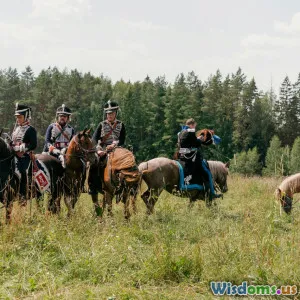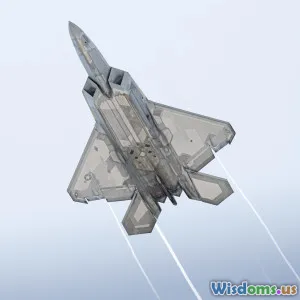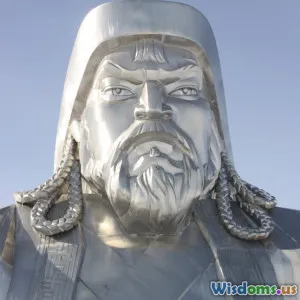
Secrets Behind Joan of Arcs Military Strategies Revealed
9 min read Unveil the military genius of Joan of Arc through her innovative strategies that changed the course of the Hundred Years’ War. (0 Reviews)
Secrets Behind Joan of Arc's Military Strategies Revealed
Joan of Arc stands as one of history’s most iconic figures—more than a saint or martyr, she was a revolutionary military leader. Amid the brutal chaos of the Hundred Years’ War, a young peasant girl emerged with visions and divine conviction, yet it was her tactical acumen on the battlefield that astonished soldiers and historians alike. How did she, with limited formal training, become the driving force behind crucial French victories?
This article peels back the layers to uncover the secrets behind Joan of Arc’s military strategies—a blend of audacity, intuition, and unconventional wisdom that shifted medieval warfare dynamics.
Early Life and Context: Setting the Stage for a Military Mind
Born in 1412 in Domrémy, a village on the edge of conflict zones, Joan grew up during a period when France was fragmented, battered by war against England, and internal strife was rampant. At 17, claiming divine guidance, she convinced the Dauphin Charles to allow her leadership roles within the military.
While Joan’s spiritual visions are widely recognized, the practical military methods she employed merit equal attention. Her success was not just supernatural but also strategically intricate.
Core Elements of Joan’s Military Strategies
1. Innovative Use of Morale and Symbolism
Joan of Arc understood that war transcends pure combat—it’s psychological. She wielded morale as a potent weapon. Her presence, adorned in white armor and carrying the Holy Banner—a silk flag emblazoned with sacred images—was a calculated spectacle. According to chroniclers like Jean de Lorme, her banner boosted French troops’ courage during the Siege of Orléans (1429).
Beyond raw fighting strength, she aimed to inspire and unify soldiers fractured by hardship and lack of leadership. In a time when superstition and faith influenced armies, Joan’s fusion of religious conviction and leadership re-energized French forces demoralized by years of setbacks.
2. Emphasis on Mobility and Surprise Attacks
Traditional medieval warfare often involved protracted sieges and set-piece battles. Joan broke the mold by advocating rapid, decisive maneuvers that caught enemies off guard. Her campaigns near Orléans showcased this: instead of waiting passively during siege warfare, she rallied troops to deliver swift, targeted strikes that disrupted English positions.
This approach culminated in the lifting of Orléans in just nine days, a remarkable feat considering the English had controlled the area for months. By keeping her forces agile, Joan mitigated the disadvantages of numerical inferiority.
3. Cultivating Cohesive Alliances and Delegation
Joan wasn’t a lone commander barking orders; she built coalitions among diverse French factions, from nobles to mercenaries. Her leadership style combined direct battlefield involvement with collaborative decision-making.
Historical sources, including eyewitness accounts from the Siege of Orléans, reveal she consulted seasoned captains like La Hire and Xaintrailles, blending their experienced counsel with her vision. This balance avoided aristocratic resistance and nurtured unity—a vital factor given France’s fragmented political landscape.
4. Tactical Use of Terrain and Fortifications
Joan astutely manipulated geographical and architectural advantages during engagements. At Orléans, she targeted key English fortifications occupying critical points along the Loire River—especially the strategically significant Bastille Saint Loup. Rather than an all-out frontal assault, she selected vital nodes to isolate and neutralize, thereby incrementally dismantling the siege.
Her comprehension of terrain shows remarkable sophistication for someone of her background, indicating keen observation and learning from commanders around her.
5. Integration of Religious Imagery and Rhetoric as a Force Multiplier
Not just symbolic on the battlefield, Joan’s consistent framing of her campaigns as divine missions galvanized the French populace and army. She claimed divine sanction not only to validate her actions but to demonize opponents as enemies of God.
Her statements during trial transcripts—"I am not afraid ... I am here to do the will of God"—infuse a moral clarity to her operational plans. This empowered lower-ranked soldiers to fight not merely for king or country but for a sacred purpose, magnifying their resolve.
Case Study: The Siege of Orléans – A Tactical Masterstroke
The Liberation of Orléans stands as a testament to Joan’s military genius. When she arrived in April 1429, the city was under a tight English siege threatening to tilt the Hundred Years’ War decisively.
Joan rejected passive defense, proposing aggressive attacks on English fortifications. She led several daring assaults herself, inspiring troops through personal bravery. For instance, the rapid recapture of the Tourelles fortification by June showed her ability to galvanize troops and coordinate complex operations.
Historians estimate the psychological impact was as decisive as the physical victory—Orléans marked a turning point, reviving French fortunes and propelling Charles VII’s coronation in Reims. This success was not serendipitous but strategically orchestrated.
Legacy and Influence on Military Thought
Though Joan’s campaign lasted little more than a year before her capture in 1430, her influence rippled through military history. She demonstrated how charismatic leadership, combined with innovative strategy adapted to contemporary contexts, could overcome seemingly insurmountable odds.
Military scholars note Joan’s ability to meld religion, morale, and mobility presaged later developments in total war concepts where psychological and ideological dimensions matter greatly. Moreover, her emphasis on collaboration and learning aligns with principles still evident in modern command structures.
Conclusion: Joan of Arc – Beyond Myth to Military Mastermind
Popular portrayals often confine Joan of Arc to sainthood or mysticism, overshadowing her profound strategic mind. Her military strategies reveal a leader who defied conventions—employing morale, mobility, alliances, terrain mastery, and ideological warfare to rewrite the course of history.
Joan exemplifies how unconventional thinking and bold leadership can redefine military campaigns, regardless of experience or status. Her legacy inspires not only historians but leaders from all fields to harness vision and strategy in pursuit of impactful change.
Sources & Further Reading
- Pernoud, Régine. Joan of Arc: By Herself and Her Witnesses. Translated by J.M. Cohen, 1994.
- Warner, Marina. Joan of Arc: The Image of Female Heroism. University of California Press, 1981.
- Sumption, Jonathan. The Hundred Years War, Volume 3: Divided Houses. University of Pennsylvania Press, 2009.
- Trial transcripts of Joan of Arc (Her attempt to articulate strategy and divine inspiration during interrogation).
By understanding Joan of Arc’s military strategies, we gain profound insights into the intersection of human conviction, leadership, and warfare innovation that can still resonate in today’s complex world.
Rate the Post
User Reviews
Popular Posts
















